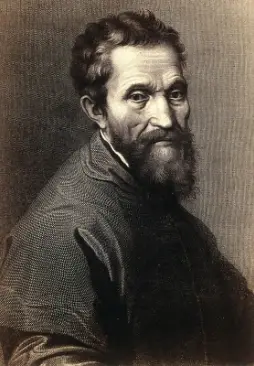
Michelangelo is known for his profound impact on art, transforming the Italian Renaissance with his sculptures and paintings. If you’re puzzled by the achievements that have made him a pivotal figure in Western art, this article promises to illuminate his influence on the field.
You will gain insights into his masterpieces, such as the Sistine Chapel ceiling and the statue of David.
Michelangelo was born in the Republic of Florence and began his artistic journey in his youth. His early works, including the famed Pietà and David sculptures, showed his skill in capturing human emotion and physical realism. His innovative approach to art, focusing on anatomy and light, set new standards for artists of his time.
Michelangelo excelled as a sculptor, painter, and architect. In his twenties, he gained attention for his Pietà and David sculptures, masterpieces celebrated for their complexity and craftsmanship.
His work on the Sistine Chapel ceiling further solidified his legacy, demonstrating his mastery of large-scale projects. He also showed his ability to work independently, famously dismissing his assistants during the project and completing the ceiling himself.
Biography and Contributions
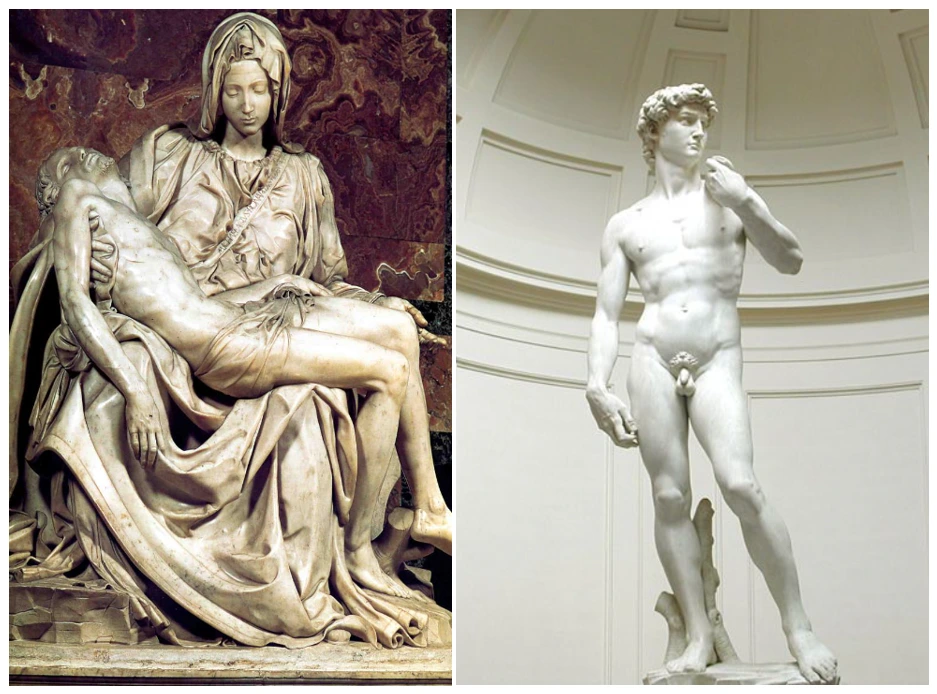
Michelangelo, who was celebrated for his genius, created iconic works of art. His journey from a young apprentice to a master artist is marked by dedication and visionary work.
Early Life and Training
Michelangelo Buonarroti was born in Caprese, Italy, on March 6, 1475. His family moved to Florence, where he was exposed to the rich art scene early on. He began his artistic training under the guidance of Domenico Ghirlandaio, a renowned painter of the time.
During these years, Michelangelo also studied classical sculpture in the Medici gardens, providing him with essential skills and knowledge.
By age 13, his talent was evident, and he became an apprentice in Ghirlandaio’s workshop. Here, Michelangelo honed his skills, absorbing techniques that defined his later works. His early exposure to classical ideals influenced his style, which was characterized by detailed anatomy and expressive figures.
This foundation laid the groundwork for his subsequent achievements, making him a cornerstone of the Renaissance.
Major Works and Achievements
Michelangelo’s contributions to art and architecture are numerous. Among his most famous works is the David, a masterpiece of Renaissance sculpture that reflects both his technical prowess and artistic vision. This statue embodies the ideal human form and has become a symbol of strength and beauty.
Another notable achievement is the Sistine Chapel ceiling, featuring the iconic Creation of Adam. These frescoes are celebrated for their grandeur and innovative use.
Michelangelo also sculpted the Pietà, showcasing his ability to convey emotion through marble. His influence extended beyond sculpture; he excelled in architecture and designed parts of St. Peter’s Basilica in the Vatican.
Renaissance Art and Artists
Renaissance art represents a period of rebirth and innovation in Europe. Major artists like Michelangelo, Leonardo da Vinci, and Raphael contributed significantly to this era, each leaving a unique mark.
Michelangelo’s Role in the Renaissance
Michelangelo is one of the most versatile and talented artists of the Renaissance. His works, such as the Sistine Chapel ceiling paintings and the Statue of David, highlight his mastery of various art forms.
He is recognized for breathing life into marble and creating religious and secular imagery that defined an era. Michelangelo’s contributions exemplified the ideals of the Renaissance and inspired other artists to explore more profound emotional expression and technical precision in their works.
Comparison with Leonardo da Vinci
Michelangelo and Leonardo da Vinci were central figures of the Renaissance, each contributing uniquely to art. Leonardo is celebrated for his scientific inquiries and paintings, such as the Mona Lisa, while Michelangelo focused on grand sculptures and iconic frescoes.
Both artists pushed the boundaries of realism and human anatomy but differed in approach. Michelangelo’s dynamic sculptures, such as Pieta, contrasted with Leonardo’s detailed, subtle brushwork, making each artist’s work distinctive.
Their rivalry spurred each to more extraordinary artistic achievements, helping to define the period’s aesthetics.
Influence on Subsequent Artists
Michelangelo’s impact extended beyond his lifetime. He influenced countless artists and sculptors, and his approach to the human form and emotional depth set a new standard.
Artists like Raphael and Sandro Botticelli drew inspiration from Michelangelo’s techniques and themes. The Michelangelo Pieta and the Creation of Adam became benchmarks in art, challenging successors to achieve similar heights of expression and technical brilliance.
Sculptural Works
Michelangelo was a master sculptor whose creations are among the most admired in art history. They include iconic statues that showcase his exceptional skills and vision.
Pieta
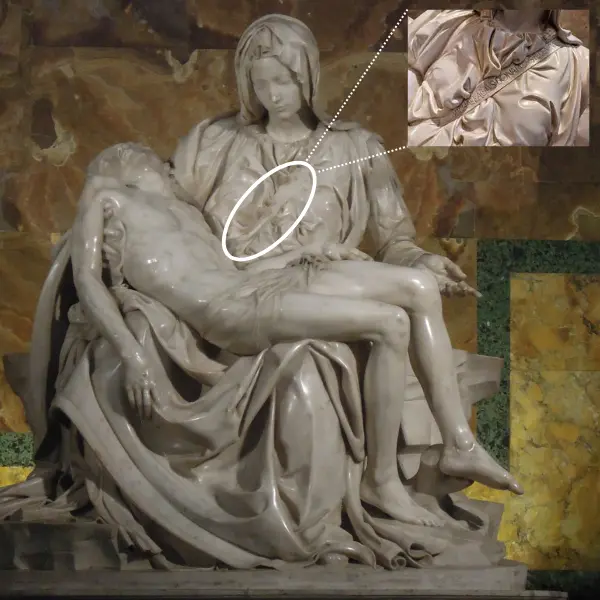
The Pieta, a masterpiece by Michelangelo, was crafted between 1498 and 1499. Located in St. Peter’s Basilica, Vatican City, it depicts the Virgin Mary holding the lifeless body of Jesus.
Remarkably, Michelangelo achieved a serene and tender representation of grief. The balanced composition and detailed drapery highlight his technical mastery.
Michelangelo carved it from a single marble block, capturing vulnerability and strength. Unlike many of his other works, the Pieta is signed by the artist, which can be seen on the sash across Mary’s chest.
David
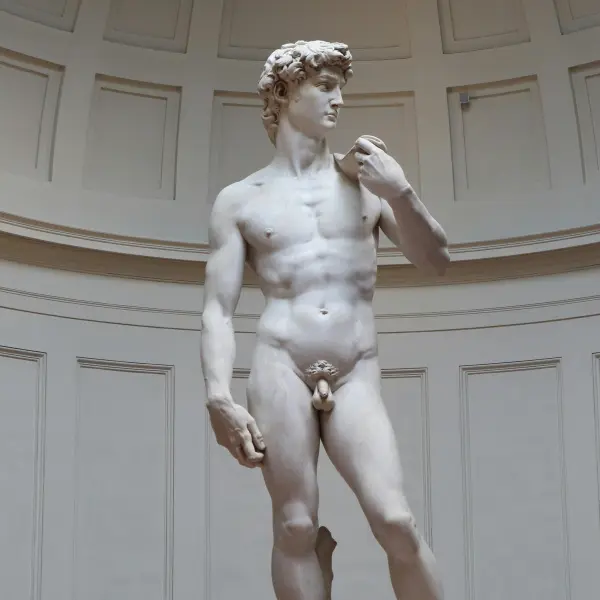
Michelangelo’s David is an emblem of Renaissance art. It represents the biblical hero before his battle with Goliath. Completed between 1501 and 1504, this iconic sculpture is housed in the Galleria dell’Accademia in Florence.
Carved from Carrara marble, David is celebrated for its anatomical perfection and intense expression. Standing 17 feet tall, it showcases Michelangelo’s genius in depicting tension and beauty.
David emphasizes the potential of human power and spirit, which are characteristics of Renaissance humanism.
Moses

The Moses statue, crafted for Pope Julius II’s tomb, embodies Michelangelo’s skill in conveying psychological depth. It is part of a larger project at San Pietro in Vincoli, Rome.
Moses is depicted with an intense expression, holding the Tablets of Law. The realism in the veins and muscles of this Michelangelo statue demonstrates his understanding of human anatomy and dynamic forms. The horns on Moses’ head reflect a traditional translation of the Bible, symbolizing rays of light.
Medici Chapel Sculptures
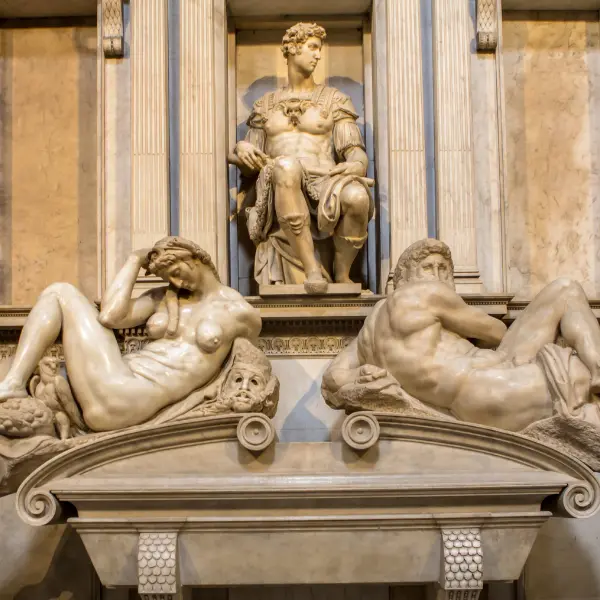
The Medici Chapel in Florence features a series of sculptures by Michelangelo created for the tombs of the Medici family. These include the figures of Night and Day and Dawn and Dusk, which adorn the tombs of Giuliano and Lorenzo de Medici.
Through graceful forms and contrasting poses, Michelangelo captured the passage of time and mortality. His work in the chapel represents his innovative approach to architecture and sculpture, achieving a harmonious interplay. These works underscore his ability to convey complex themes through art.
Painting Achievements
Michelangelo’s impact on the art world can be seen through his intricate and powerful works. His paintings combine exceptional skill with emotional depth, leaving a lasting influence on other artists like Raphael and Sandro Botticelli. The following subtopics highlight some of his most famous works.
Sistine Chapel Ceiling
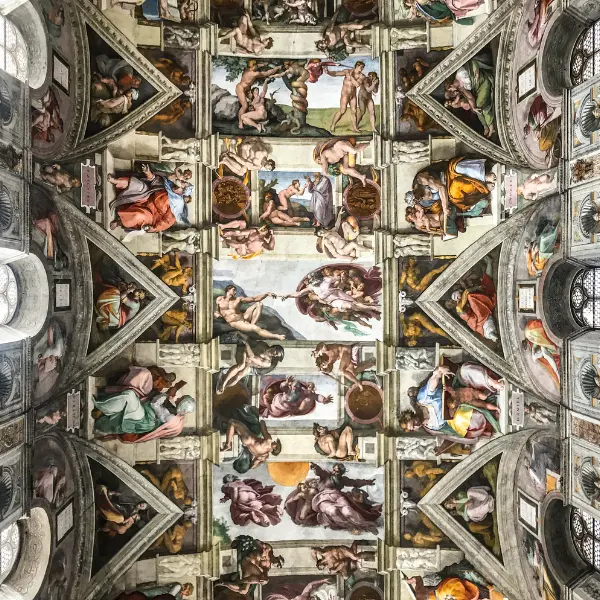
Michelangelo’s masterpiece, the Sistine Chapel ceiling, stands out in art history. Painted between 1508 and 1512, it features nine central panels depicting scenes from Genesis.
The most notable is the Creation of Adam, in which God gives Adam life. This iconic piece represents not only his artistic talent but also his understanding of human anatomy and emotion.
The entire ceiling covers over 5,000 square feet with over 300 figures. Each character displays intricate detail and vivid expression.
Michelangelo’s vibrant colors and dramatic contrasts create a dynamic and engaging visual experience. This complex work revolutionized fresco painting and solidified his place as a leading artist of the High Renaissance.
The Last Judgment
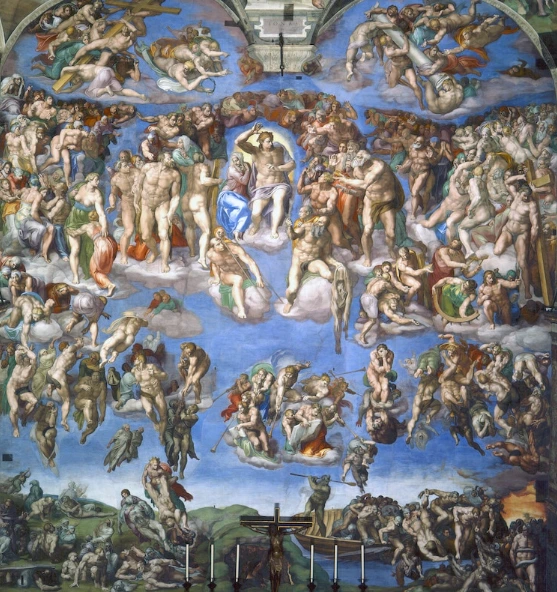
The Last Judgment, completed in 1541, covers the altar wall of the Sistine Chapel. Unlike the ceiling, this work focuses on the theme of the Second Coming of Christ and the final judgment of souls.
Over 300 figures fill the space, surrounding a central image of Christ in the act of judgment. Michelangelo imbued each character with intense emotion and illustrated scenes of heaven and hell.
While it faced initial criticism for its nudity, the painting remains a remarkable example of his mastery over form, composition, and narrative. Today, it stands as a crucial work of Michelangelo’s art.
Other Notable Paintings
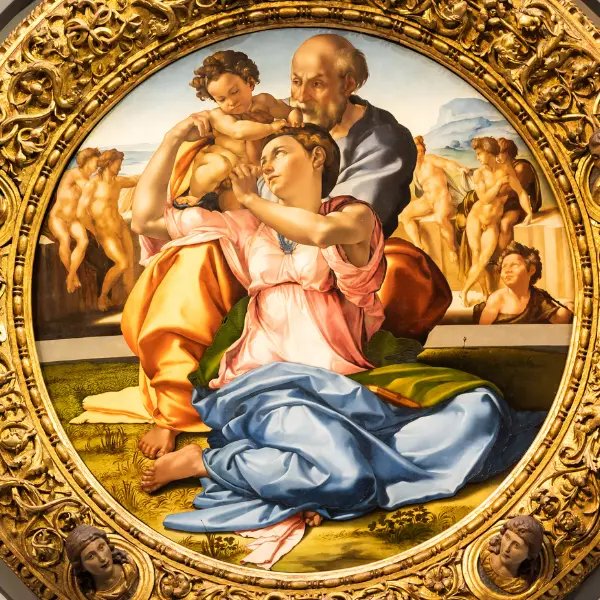
Beyond the Sistine Chapel, Michelangelo created notable pieces that showcase his genius. Works like the Doni Tondo employ vibrant colors and compelling compositions.
This painting, housed in the Uffizi Gallery, captures the Holy Family in a circular framework, emphasizing unity and intimacy.
Though primarily known for his sculptures, Michelangelo’s paintings demonstrate his versatility as an artist. His ability to convey complex themes through powerful imagery marked him as a leader in the art world and helped define the Renaissance era.
His paintings and sculptures, like David‘s, continue to inspire artists and admirers alike.
Architectural Contributions
Michelangelo’s genius extended beyond painting and sculpture, profoundly impacting architecture. He contributed significantly to St. Peter’s Basilica, the Laurentian Library, and Capitoline Hill, leaving a lasting legacy in each project.
St. Peter’s Basilica
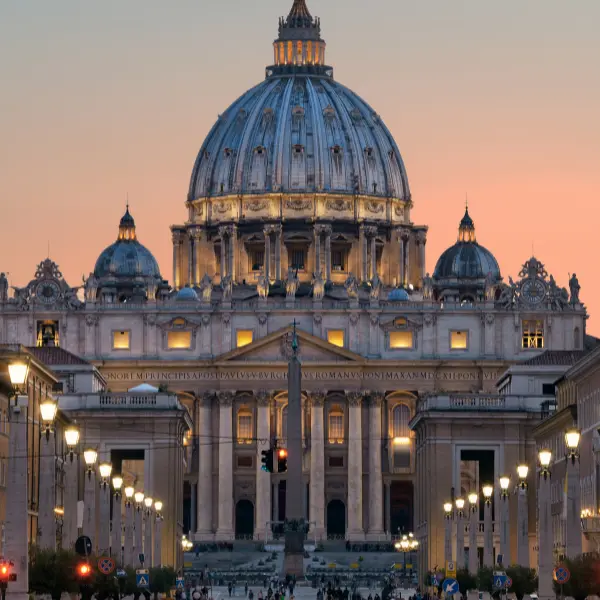
Michelangelo made a significant impact on St. Peter’s Basilica in Rome. He worked on this project in his later years.
His design for the basilica’s dome is imposing. It reflects his belief in architectural harmony and balance.
This iconic dome remains one of his most famous works. It highlights his skill in combining beauty with structure.
The design also involved simplifying previous architectural plans. Michelangelo removed unnecessary elements and focused on enhancing the basilica’s structure.
His contributions were crucial in creating a unified and grand space. Michelangelo transformed St. Peter’s Basilica into a marvel of Renaissance architecture.
Laurentian Library
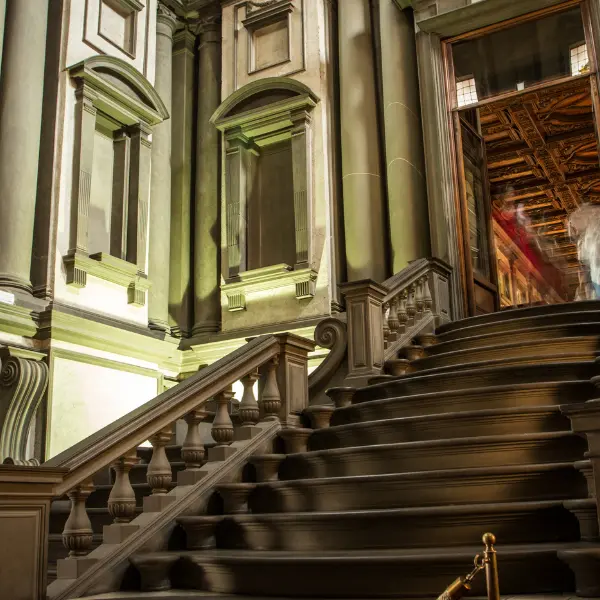
The Laurentian Library in Florence showcases Michelangelo’s innovative approach. Commissioned by the Medici family, the library reflects his creative vision.
Its vestibule and staircase design are especially notable. Michelangelo’s work here demonstrates his unique ability to blend function with aesthetics.
The library’s staircase is unconventional. Its dynamic curves and flowing forms draw visitors’ attention and create a sense of movement.
This design helped set a new standard in architectural design during the Renaissance. Michelangelo’s work at the Laurentian Library highlights his commitment to challenging traditional forms and experimenting with space.
Capitoline Hill and Piazza
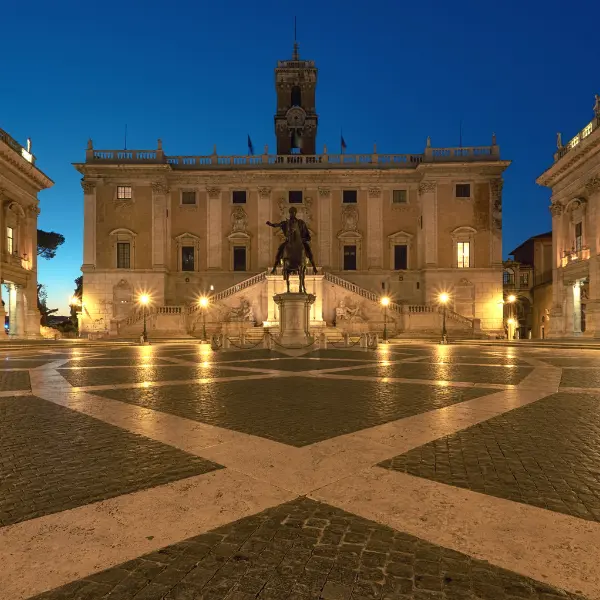
Michelangelo’s contributions to Capitoline Hill in Rome exhibit his visionary urban planning. At Pope Paul III’s request, he redesigned the Capitoline Piazza.
The design includes an innovative geometric pattern. This project exemplifies Michelangelo’s skill in integrating sculpture, architecture, and public space.
One key feature is the placement of the ancient equestrian statue of Marcus Aurelius. Michelangelo placed it in the center of the piazza, adding a sense of symmetry and balance.
His work on Capitoline Hill enhanced its appearance and redefined how public spaces could function in a city.
Michelangelo’s Interest in Anatomy
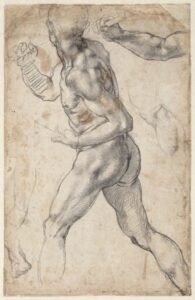
Michelangelo’s deep interest in anatomy significantly influenced his work in art and sculpture. His anatomical studies helped shape his distinctive style, emphasizing realism and precise detail.
Early Anatomical Studies
Michelangelo began exploring anatomy in his youth, often studying cadavers to understand the human body better.
These early experiences gave him the foundation to capture the complexity of human muscles and bones.
Unlike many of his contemporaries, Michelangelo focused on integrating anatomical accuracy with artistic expression.
His dedication to anatomy is reflected in his drawings, where he meticulously illustrated various body parts to convey movement and emotion effectively.
This knowledge set him apart from other artists at the time, such as Sandro Botticelli, who did not engage as profoundly in anatomical exploration.
Impact on Sculptural Techniques
Michelangelo’s sculptures, such as David and the Pieta Michelangelo, showcase his mastery of anatomy, demonstrating lifelike representations and dynamic poses.
He utilized his anatomical knowledge to portray realistic muscle tension and physical form.
David Michelangelo, in particular, reveals his ability to highlight the human body’s intricate details, enabling viewers to appreciate the subject’s physicality and emotion.
Michelangelo incorporated these insights into his distinctive carving techniques, elevating his work unmatched by his peers.
His focus on anatomical precision was crucial in shaping Renaissance sculptural art and bridging the gap between art and science.
Anatomical Accuracy in Art
Michelangelo’s paintings, notably those in the Sistine Chapel, exhibit his profound understanding of human anatomy.
The Creation of Adam, renowned as one of his masterpieces, illustrates an extraordinary comprehension of the human form.
His ability to render figures with realistic proportions and anatomical precision set a new standard for artists like Raphael.
Michelangelo’s attention to detail extended beyond mere replication, infusing each figure with life and character.
His commitment to anatomical accuracy informed his technique and inspired future generations to pursue the harmonious blend of artistic skill and anatomical knowledge.
Artistic Style and Techniques
Michelangelo’s art is celebrated for its mastery and innovative approach, particularly in sculpture and fresco painting. His deep study of the human form and revolutionary techniques set him apart in the Renaissance era.
Use of Marble in Sculptures
Michelangelo famously worked with marble to create some of his most iconic art pieces.
The sculptures, like David and Pietà, exemplify his ability to bring stone to life.
He meticulously selected his marble, preferring blocks from the Carrara quarries in Italy due to their high quality.
His process involved a method known as “non-finito,” where parts of the sculpture were deliberately left unfinished, showcasing the raw artistic process.
Michelangelo’s attention to detail and anatomical accuracy are evident in David, where every muscle’s tension is captured perfectly.
His understanding of human anatomy, developed through dissections, allowed him to create lifelike figures that seemed to breathe.
Michelangelo viewed the marble as inherently possessing the form he aimed to reveal, leading him to famously state, “I saw the angel in the marble and carved until I set him free.”
Fresco Painting Techniques
Michelangelo’s work on the Sistine Chapel ceiling marked a significant achievement in fresco painting techniques. This project combined artistic vision with technical prowess.
Before applying paint, he prepared the surface by laying plaster in small sections, a method used to ensure the pigment bonded well with the wall.
He employed a technique called “buon fresco,” in which water-based pigments are applied to wet plaster, allowing the colors to become part of the wall.
This approach made the fresco durable and vibrant.
The Sistine Chapel painting illustrates his innovative style through the dynamic composition and intricate figures, notably in the Creation of Adam.
Michelangelo revolutionized fresco by incorporating realistic human emotions and movements, earning his place among master Renaissance artists.
Relationship With Patrons
Michelangelo’s interactions with his patrons were complex, often marked by mutual respect and occasional conflict. His notable associations with the Medici and the Papal authorities significantly influenced his career.
Medici Family
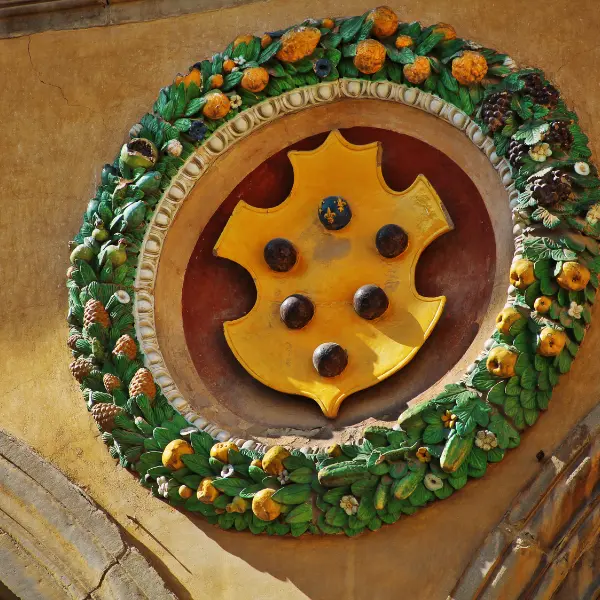
Michelangelo had a multifaceted relationship with the Medici family, who were pivotal in Florence’s political and cultural life.
The Medici were instrumental in nurturing his early career. Lorenzo de Medici, the leading figure of the family, recognized Michelangelo’s potential and provided him with opportunities to pursue his art in a supportive environment. They funded various projects and helped him refine his skills.
However, his relationship with them was not without tension. The tumultuous political environment sometimes put him at odds with the Medici.
Despite these challenges, the Medici played a crucial role in shaping Michelangelo’s career. His complex association with them is evident in his work and the Medici family’s history.
Papal Patrons
Michelangelo’s dealings with the Papal patrons were equally significant, notably with Pope Julius II and Pope Leo X.
He worked on major Church projects, including the ceiling of the Sistine Chapel and the Moses sculpture for Pope Julius II. These projects are among Michelangelo’s most famous works.
While his relationship with the Popes was productive, but also fraught with challenges.
Pope Julius II and Michelangelo had a contentious dynamic marked by frequent disagreements. Nonetheless, Michelangelo’s work with the Papacy yielded masterpieces in Michelangelo’s art that remain iconic today.
Final Thoughts
One of the most renowned figures of the Renaissance, Michelangelo, left a legacy that continues to inspire. His sculpture, painting, and architecture work demonstrate a profound understanding of human anatomy and emotion.
Among his masterpieces, the fresco of The Last Judgment in the Sistine Chapel stands out for its dramatic portrayal of the divine and the doomed.
This fresco vividly depicts the Second Coming of Christ, surrounded by saints and sinners.
Michelangelo’s unique approach awakened and caused controversy, mainly because it included many nude figures, challenging the norms of his time.
Key Points:
- Sculptor and painter known for his emotional depth
- Notable works: Sistine Chapel ceiling and The Last Judgment
- Known for intense biblical scenes with over 300 figures
Michelangelo’s influence extended beyond his artwork. His contributions to the development of Western art are invaluable.
His dedication to depicting the human form in its most raw and powerful state set new standards for artists of his time and beyond.
Michelangelo had an enduring impact on art, inspiring countless artists who followed. His works continue to attract millions, showcasing his talent and innovative spirit.
As one explores his legacy, it becomes evident how his art embodies the blend of passion and skill that defines the Renaissance era.
Frequently Asked Questions
Michelangelo is one of the most revered artists in history, renowned for his remarkable contributions to art and sculpture. This section addresses common questions about his iconic works and notable interactions.
Michelangelo’s most famous painting is the ceiling of the Sistine Chapel in the Vatican. This masterpiece, completed between 1508 and 1512, features notable scenes, such as the Creation of Adam, showcasing his exceptional skill.
Michelangelo and Leonardo da Vinci were prominent Renaissance figures who worked in Florence simultaneously. They were known to have a competitive rivalry, but details about their interactions remain limited.
Michelangelo died on February 18, 1564, at the age of 88. He was initially buried in Rome but later moved to Florence, where his tomb, designed by Giorgio Vasari, is located at the Basilica of Santa Croce.
Michelangelo’s greatest masterpiece is often regarded as the statue of David, completed in 1504. This sculpture, crafted from marble, embodies Renaissance ideals of human beauty and proportion.
Leonardo da Vinci painted the Mona Lisa, one of the world’s most famous artworks. It is housed at the Louvre Museum in Paris.
The famous painting of two fingers touching is part of Michelangelo’s Sistine Chapel ceiling, known as the Creation of Adam. This detail depicts God and Adam reaching towards each other, symbolizing the spark of life.
Two of Michelangelo’s most famous works are the Sistine Chapel ceiling and the statue of David. Both have left a lasting impact on art and architecture, showcasing his mastery of multiple disciplines.
In the Creation of Adam, the slight gap between the fingers is interpreted as a powerful artistic choice. It symbolizes the moment before life is given, emphasizing the potential and divine energy about to be transmitted.
Michelangelo’s most famous statue is the David, completed in 1504. This work symbolizes strength and youthful beauty. It captures a moment of serene contemplation before battle.
The question of who is better, Leonardo or Michelangelo, is subjective. It depends on individual appreciation for their distinct styles and contributions. Both artists excelled in their respective fields. They have had a profound influence on Western art.
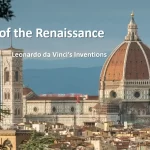
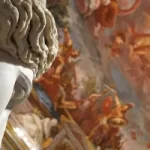
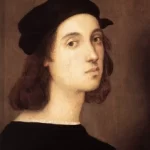
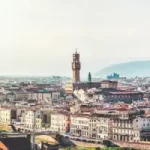
 Leonardo Bianchi,
the creator of Leonardo da Vinci's Inventions.
Thank you for visiting
Leonardo Bianchi,
the creator of Leonardo da Vinci's Inventions.
Thank you for visiting